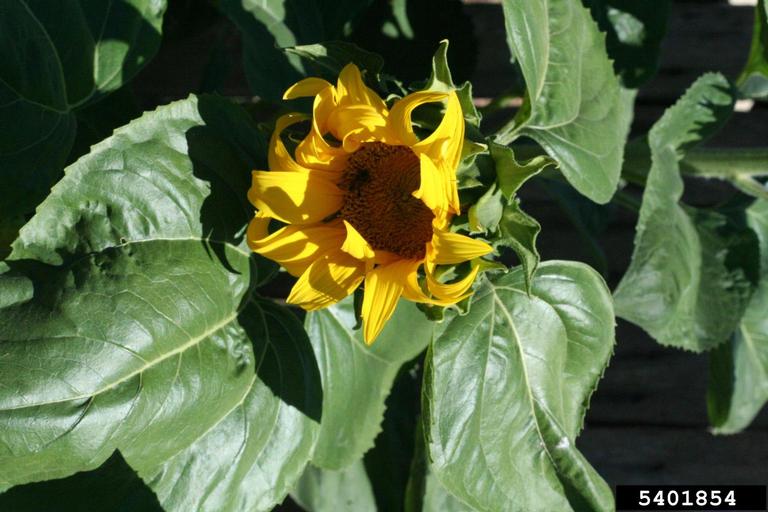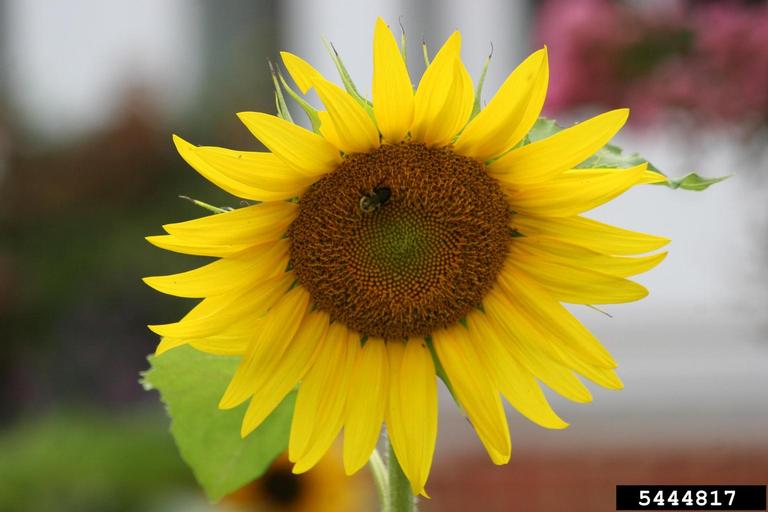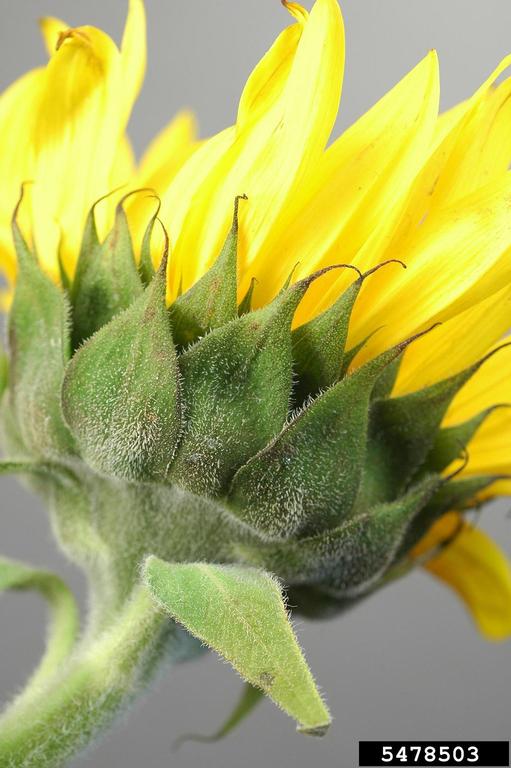Selected Plants of Navajo Rangelands
Sunflower
Nidíyílii

The common sunflower is native to the United States, but it has the potential to behave like an invasive, occasionally growing in dense stands. It is grown as a food crop for humans, birds, and other wildlife. It can grow in a range of conditions from roadsides to fields. While not called "giant sunflower," it grows to approximately the same height as its relative, ranging from 3 to 10 feet tall. The flowerheads are usually 3 to 6 inches in diameter. Leaves are rough in texture with toothed edges. Compared to the giant sunflower, Helianthus giganteus, the leaves of this sunflower are more oval shaped.
Other species of sunflower found on the Navajo Nation may include:
Helianthus anomalus,
Helianthus maximiliani,
Helianthus nuttalii,
Helianthus petiolaris




Copyright 2018 New Mexico State University. Individual photographers retain all rights to their images. Partially funded by the Western Sustainable Agriculture Research and Education Program (westernsare.org; 435.797.2257), project EW15-023. Programs and projects supported by Western SARE are equally open to all people. NMSU is an equal opportunity/affirmative action educator and employer.
NMSU does not discriminate on the basis of age, ancestry, color, disability, gender identity, genetic information, national origin, race, religion, retaliation, serious medical condition, sex (including pregnancy), sexual orientation, spousal affiliation or protected veteran status in its programs and activities as required by equal opportunity/affirmative action regulations and laws and university policy and rules. For more information please read the NMSU Notice of Non-discrimination.

